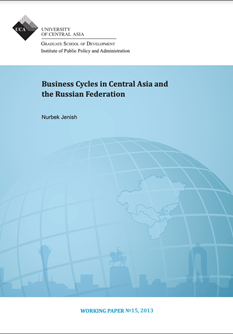Business Cycles in Central Asia and the Russian Federation
The paper examines business cycle (BC) features of selected Central Asian (CA) countries – Kyrgyzstan, Kazakhstan and Tajikistan- and the Russian Federation, from the first quarter of 2000 through the fourth quarter of 2011.
Key findings include the following: (i) Output fluctuations in these countries are more volatile than in developed countries; (ii) Unlike in the Russian Federation, the duration of business cycles in the CA countries is shorter compared to that of developed countries; (iii) With the exception of Kazakhstan, household consumption is more volatile than output; (iv) There is a mixed picture on the BC properties of other main macroeconomic variables in these countries; (v) In Kyrgyzstan and Tajikistan, monetary shocks matter for BC fluctuations; (vi) In Kyrgyzstan and Tajikistan, government expenditures are found to be procyclical, which may indicate the inefficiency of fiscal policy in stabilizing economy following negative shocks in these countries; (vii) Kyrgyz and Tajik BCs are not synchronized with either Russian or Kazakh BCs; (viii) Kazakh and Russian BCs are synchronized, indicating the increasing degree of economic integration between the countries, and (ix) With the exception of Tajikistan, there is a positive correlation between BCs in Kyrgyzstan and Kazakhstan with fluctuations in the global prices of their main export commodities: gold and oil.









